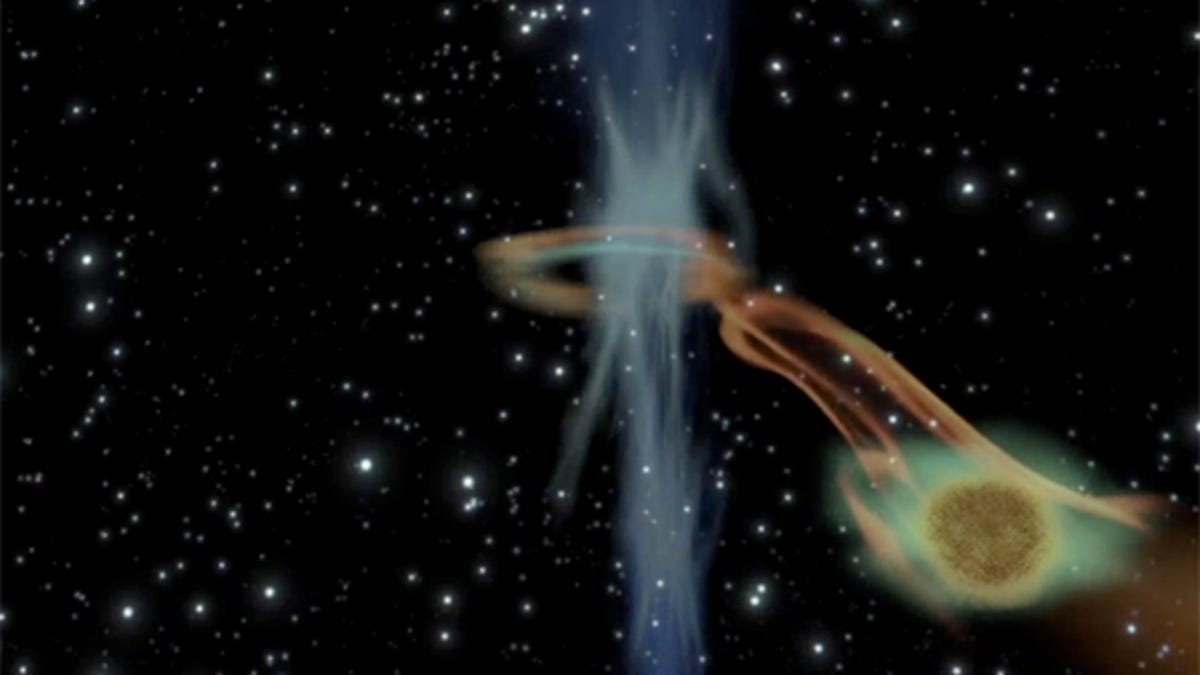Watch a black hole munch up a giant planet
Astronomers have spotted a black hole waking up and snacking on a giant planet that got a little too close.

(Credit: ESA)
Astronomers have spotted a black hole waking up and snacking on a giant planet that got a little too close.
After decades of hibernation, a black hole in the galaxy NGC 4845 has been spotted waking up and taking a hefty bite out of a low-mass object (either a giant planet or failed star known as a brown dwarf) that was passing by.
The European Space Agency's (ESA) Integral space observatory was the first to catch the 47 million light years-distant event after they noticed an X-ray flare coming from NGC 4845 in its wide field-of-view. It was confirmed by follow-up sightings from ESA's XMM-Newton, NASA's Swift and Japan's MAXI X-ray monitor on the International Space Station.
Together, the observatories traced the event back to January 2011 when it was at its maximum, brightening the galaxy by a factor of 1000 — allowing the astronomers to see it. It took a year for the galaxy to return to normal.
The cause came from the galaxy's core black hole — which is approximately the size of 300,000 suns — as it woke up and ravenously devoured an object estimated to be around 14 to 30 times the size of Jupiter. An object of that size could be a brown dwarf — but it could also be a super-planet, booted from its solar orbit by a gravitational disruption.
The astronomers also observed that the black hole's feeding wasn't constant. The patterns of the X-ray emission showed that there was a delay of two to three months between the object's disruption and when its debris was burned near the black hole.
Soon, Earth's space observatories will have the chance to view such an event from much closer: a large gas cloud is headed straight for the core of the Milky Way, due to arrive sometime later this year.
The findings of these observations were published in the journal Astronomy & Astrophysics under the title, "Tidal disruption of a super-Jupiter by a massive black hole".
Via www.esa.int

